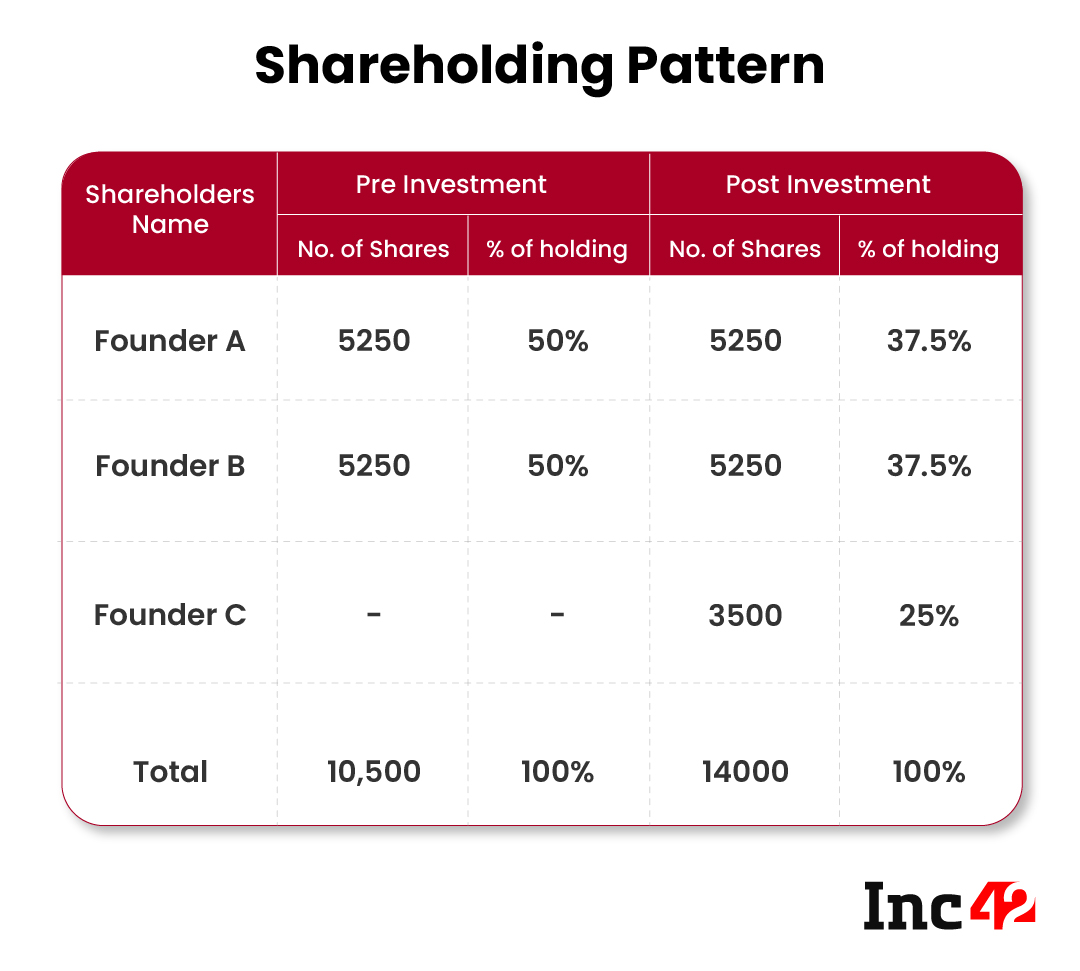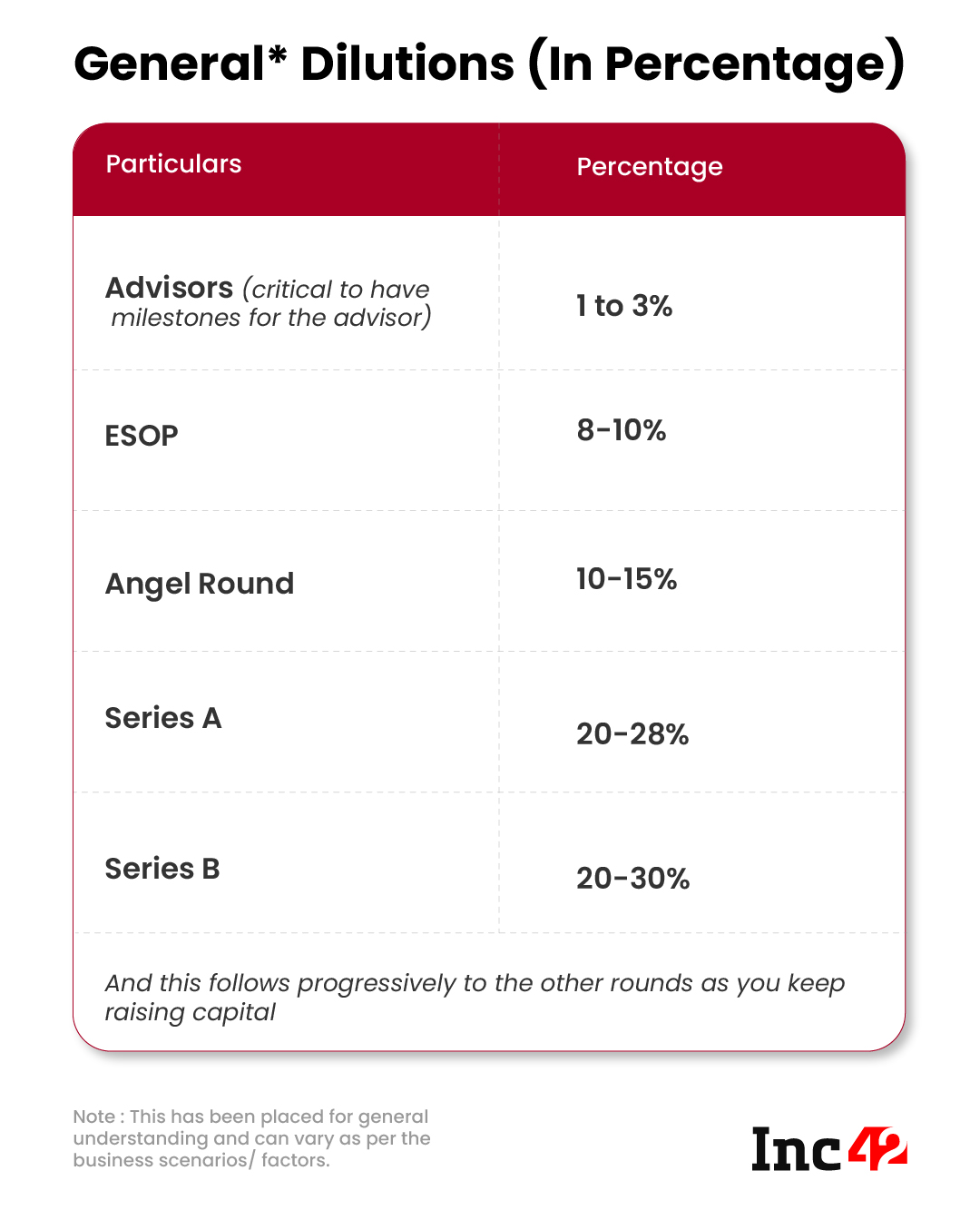Founders are often caught up in the tug of war between balancing costs and distributing equity of their startups
Through this article, we address the frequently asked questions about one of the most important aspects of a startup — Equity Dilution
It is quite vital for any founder to understand the fundamentals behind equity dilution. A grasp on these concepts enables the founder to have better control of the shareholding
The startup ecosystem is heavily reliant on wealth creation and value generation. With great importance placed on the valuation component, stakeholders are continuously looking for varied structures to define the equity distribution of a company.
Founders are often caught up in the tug of war between balancing costs and distributing equity of their startups. Although there are no fixed principles on which these distributions are done, industry practices define certain structures on a broad level. Founders might follow these structures for equity distribution.
As founders, we are always worried about diluting our equity because, for each one of us, we are the next unicorn in the making. A genuine concern for many as the widespread use of technology and demand accelerating even in a pandemic has shown that innovative businesses are here to stay and grow.
Through this article, we address the frequently asked questions about one of the most important aspects of a startup — Equity Dilution.
What Does ‘Dilution Of Equity’ Mean?
The answer to this question is best explained with an example.
Assume your company is a piece of land. At the start of your venture, you and your cofounder are the only two people who are occupying this land (shareholders). As the next steps, you bring in an advisor and an ESOP pool is created. Consequently, the share of the land that you occupy reduces as you start sharing a part of the land with others.
With time, you will have investors coming in to occupy the same piece of land, so you need to further share your space. The net effect is that, as and when people keep getting added to your piece of land, your share of the land reduces.
Now let’s apply the same principle to your startup! With the number of shareholders increasing, you have to make space for them by reducing your shares. This reduction in the land you hold or the shares you hold is termed dilution of equity.
What Does Primary Sale Vs Secondary Sale Mean?
Founders are often sceptical about diluting their shares in the company, and rightly so. To address this issue, it’s vital to understand two primary concepts — primary sale and secondary sale.
Primary Sale: A primary sale occurs, when an investor invests in a company through the allotment of new shares. In a primary investment scenario, everyone’s shareholding gets diluted in the proportion to their shareholding, unless special conditions are mentioned.
Secondary Sale: A secondary sale, on the other hand, occurs when an investor is looking to invest in a company through the purchase of the hares of the founder and other shareholders. The investor directly pays money to the concerned shareholders and doesn’t infuse any money into the company. As a result, there is no dilution in the shareholding percentages of other parties except the buyer and the seller.
In 99.99% of cases, the investor is always looking for a primary investment. It’s generally only at series B, C or ahead where there is a possibility of a partial secondary sale to happen.
How Does It Work?
Fundamentally, each startup is made of 100% shares. Let’s understand this with an example to get clarity:
- Two founders, A and B, are holding 5,250 shares each with 50% of the controlling interest in the company
- An investor, C comes with an investment of $ 1Mn with a valuation of $3 Mn
Now have a look at the figures in below table to understand this quickly:

Here, the number of shares has increased proportionately based on the post-investment ratio. This means that Investor C’s holding equals 25% ($1 Mn/$4 Mn). The investors and the founders have the option of deciding upon any ratio based on mutual understanding.
Post investment, we can see that the holding percentage of founders has diluted. Their controlling interest has also reduced from the original hold.
How Much To Dilute?
This question has no correct answer. It is subjective and depends on the stage of the business you are at, among a lot of other factors. Of course, if you are doing great numbers, you can negotiate better. However, certain factors need to be kept in mind when considering how much dilution to go for:
- If there is too much dilution, it can be a cause for concern for the future investors
- On the other hand, If the shareholding remains too limited with the founders, investors might be put off as they would like to have skin in the game

However, the ultimate goal of your startup is to grow. So even if the dilution numbers vary from the dilution numbers you expected, it is vital you keep the growth of the business in mind. Investments help you get closer to this goal.
Pre-Money Vs Post Money
This is a simple concept that founders often struggle with.
Pre-money valuation is nothing but the value of the company prior to the company receiving the investment amount. Traditionally, this value is derived through various internationally accepted valuation methods. A popular valuation method is the discounted cash flow method.
With startups, this value is derived from the mutual negotiations entered into between the founders and the investors. It is alternatively called the ‘as on date value’ of the company. So, if you were selling 100% of your company, this is the value you would get. Investors offer equity based on pre-money valuation.
Post-money valuation, in the simplest of terms, is the value of the company after it receives the investment amount. If it were a mathematical equation, it would look like this:
Post-Money Valuation = Pre-Money Valuation + Investment Amount
Investors all offer equity based on pre-money valuation however the percentage sought is based on the post-money valuation.
It is quite vital for any founder to understand the fundamentals behind dilution and captables. It serves as an important metric of fundraising. We often see founders neglect it due to a lack of clarity on these concepts. A grasp on these concepts enables the founder to have better control of the shareholding.










